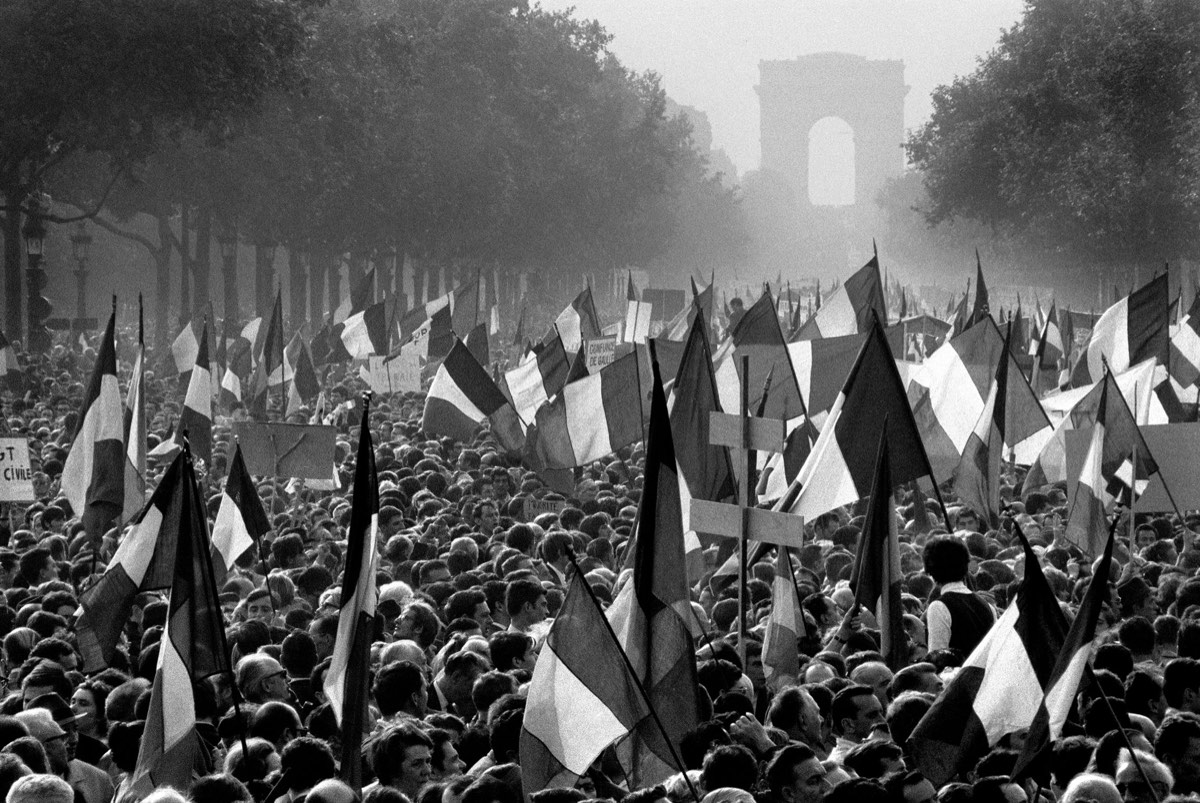
May 1968 saw global upheavals that shook entire nations. Much to the surprise of Le Monde, the country's leading newspaper, which only six weeks earlier had proclaimed that the French were "too bored" to take part in such discord, demonstrations broke out across Paris. This wave of discontent was driven initially by students, in opposition to, among other things, the conservative government, led by De Gaulle, the patriarchy, and what they saw as an outdated university system. They were soon joined by blue-collar workers unhappy with the conditions.
At the height of the chaos, Moroccan-born French photojournalist Bruno Barbey captured this striking scene: a sea of French flags framed by the iconic elm trees of Paris' most famous street, and the smoke-veiled shape of the Arc de Triomphe. This image is a powerful transcription for many reasons, not the least of which is its rich paint tones (a color rarely used in news reporting at the time). In addition, it is remarkable in that it features De Gaulle's supporters rather than students or workers. It captures the complex nature of a period in history that continues to divide French opinion to this day.
Barbey's photography reflects a time of political, social, and cultural upheaval that had a tremendous impact on France and the rest of the world. It captured a moment when French citizens decided to take control of their destiny and rebel against the conservative establishment. It marked a turning point in French history that has continued to influence subsequent generations.
In the weeks following the photograph, France was plunged into a period of conflict and disorder. Strikes paralyzed the economy, demonstrations were marred by violence, and clashes broke out between law enforcement and protesters. However, despite the violence and destruction, people continued to fight for a better future.
Even today, Bruno Barbey's photograph is an iconic representation of this tumultuous period in French history. It has become an icon of the May 68 revolution and a symbol of hope and change. It reminds people that the voice of the people can be powerful and that history can be changed through unity and determination.